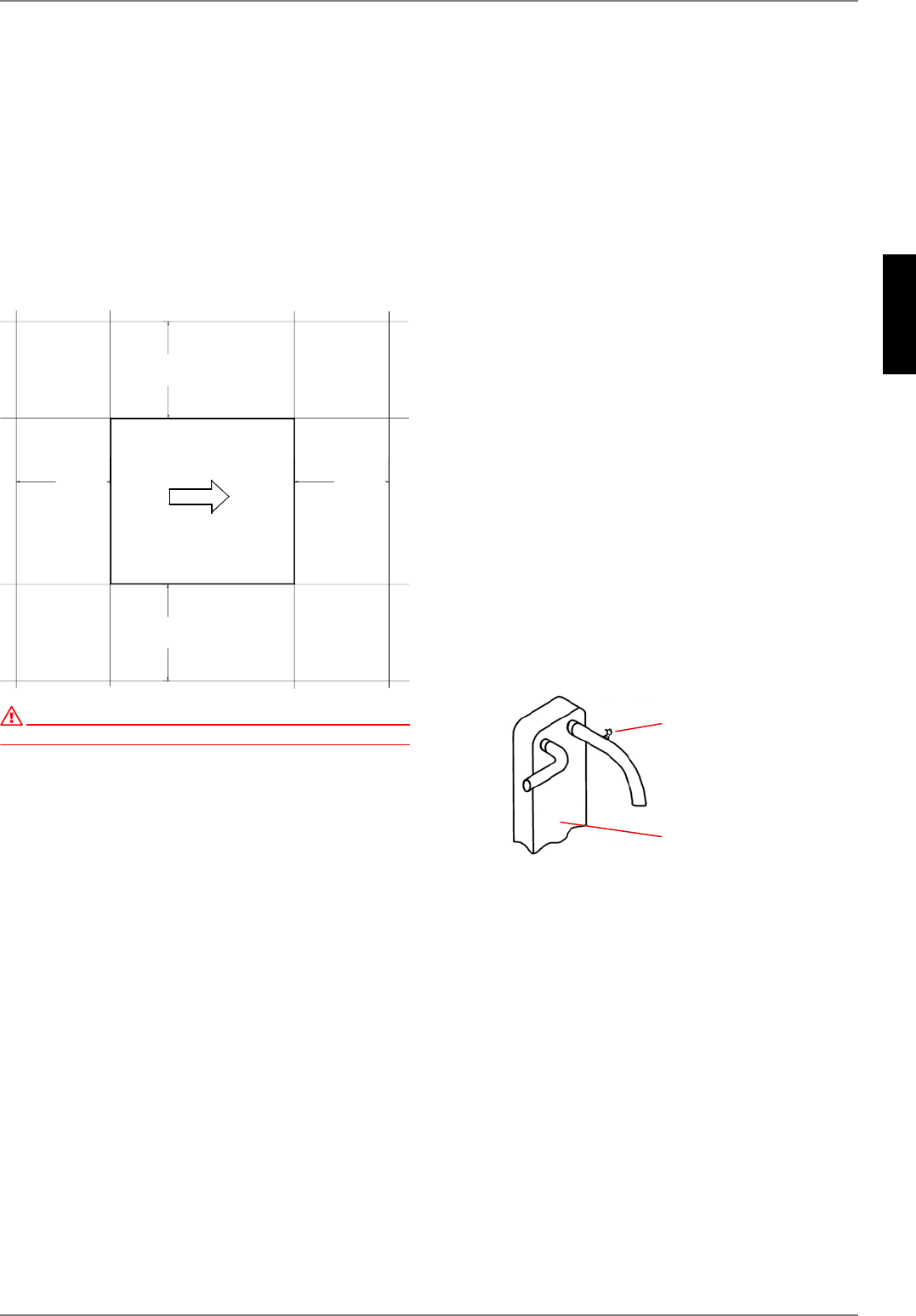
E-5
English
6.2
5Set-up
5.1 General Information
The heat pump is suited for outdoor installation. The device
should always be installed on a permanently smooth, even and
horizontal surface and must be aligned vertically. The entire
frame should lie directly on the ground to ensure a good sound-
proof seal and to prevent the water-bearing components from be-
coming too cold. If this is not the case, additional insulation
measures may be necessary. It must be possible to carry out
maintenance work without hindrance. This can be ensured by
maintaining a clearance of 1.2 m to any fixed walls.
ATTENTION!
Do not restrict or block the area around the air intake or outlet.
5.2 Condensed Water Pipe
Condensed water that forms during operation must be drained
off frost-free. The heat pump must be mounted on a level plane
to guarantee proper drainage. The condensed water pipe must
have a minimum diameter of 50 mm and should be fed frost-free
into a sewer. Condensate should not be discharged directly into
clearing tanks and cesspits because the aggressive vapours
could destroy the evaporator.
6 Installation
6.1 General Information
The following connections need to be established on the heat
pump:
Flow and return flow of the heating system
Condensate outflow
Control line to the heat pump controller
Power supply
6.2 Heating System Connection
The heating system connections on the heat pump have a 1" ex-
ternal thread.
Route the connection hoses out of the device in a downwards di-
rection. Use a spanner to firmly grip the transitions when con-
necting the heat pump. After the heat pump has been installed,
the ductwork must be sealed so that the connection is gastight.
Before connecting the heating water system to the heat pump,
the heating system must be flushed to remove any impurities,
residue from sealants, etc., and to prevent any accumulation of
deposits in the liquifier. A contaminated liquifier may cause the
heat pump to completely break down. Systems in which the heat-
ing water flow can be shut off via the radiator or thermostat
valves must be fitted with an overflow valve downstream from the
heat pump in a heating bypass (to be installed by the customer).
This ensures a minimum heating water flow rate through the heat
pump and helps to avoid faults.
Once the heating system has been installed, it must be filled, de-
aerated and pressure-tested (in the heat pump the air-relief cock
is located at or in the water pipes at the condenser).
Minimum heating water flow rate
The minimum heating water flow rate through the heat pump
must be assured in all operating states of the heating system.
This can be accomplished, for example, by installing either a
manifold without differential pressure or an overflow valve. The
procedure for adjusting an overflow valve is described in the
Chapter Start-up.
P P
P
P
$LUUHOLHIFRFN
&RQGHQVDWRU


















